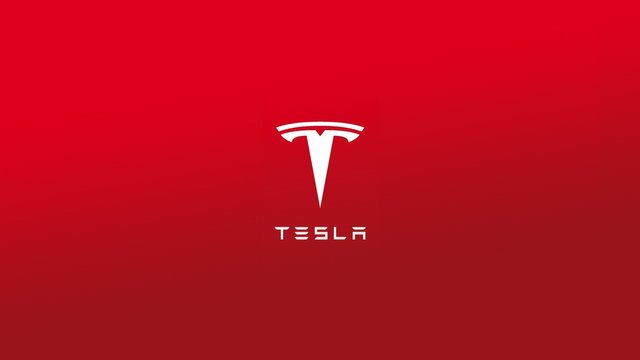Elon Musk: Master Plan, Part Deux

Note: This post has been taken from the official Tesla Blog where it was posted by Elon Musk. I am posting only a part of it here, because it seems both instructive and inspiring, and hence very much worth it. I say instructive, thinking how much time and hard work it took for them to get here. And though Musk is Musk, keep in mind they were very close to failing several times. I say inspiring, being sincerely amazed at what he promises and how soon he intends to achieve it.
To be honest, this kind of plan comes with a subtile touch of science-fiction, and yet, it is even more inspiring thinking it will soon become reality. Hope you enjoy the reading.
Autonomy
As the technology matures, all Tesla vehicles will have the hardware necessary to be fully self-driving with fail-operational capability, meaning that any given system in the car could break and your car will still drive itself safely. It is important to emphasize that refinement and validation of the software will take much longer than putting in place the cameras, radar, sonar and computing hardware.
Even once the software is highly refined and far better than the average human driver, there will still be a significant time gap, varying widely by jurisdiction, before true self-driving is approved by regulators. We expect that worldwide regulatory approval will require something on the order of 6 billion miles (10 billion km). Current fleet learning is happening at just over 3 million miles (5 million km) per day.
I should add a note here to explain why Tesla is deploying partial autonomy now, rather than waiting until some point in the future. The most important reason is that, when used correctly, it is already significantly safer than a person driving by themselves and it would therefore be morally reprehensible to delay release simply for fear of bad press or some mercantile calculation of legal liability.
According to the recently released 2015 NHTSA report, automotive fatalities increased by 8% to one death every 89 million miles. Autopilot miles will soon exceed twice that number and the system gets better every day. It would no more make sense to disable Tesla's Autopilot, as some have called for, than it would to disable autopilot in aircraft, after which our system is named.
It is also important to explain why we refer to Autopilot as "beta". This is not beta software in any normal sense of the word. Every release goes through extensive internal validation before it reaches any customers. It is called beta in order to decrease complacency and indicate that it will continue to improve (Autopilot is always off by default). Once we get to the point where Autopilot is approximately 10 times safer than the US vehicle average, the beta label will be removed.
Sharing
When true self-driving is approved by regulators, it will mean that you will be able to summon your Tesla from pretty much anywhere. Once it picks you up, you will be able to sleep, read or do anything else enroute to your destination.
You will also be able to add your car to the Tesla shared fleet just by tapping a button on the Tesla phone app and have it generate income for you while you're at work or on vacation, significantly offsetting and at times potentially exceeding the monthly loan or lease cost. This dramatically lowers the true cost of ownership to the point where almost anyone could own a Tesla. Since most cars are only in use by their owner for 5% to 10% of the day, the fundamental economic utility of a true self-driving car is likely to be several times that of a car which is not.
In cities where demand exceeds the supply of customer-owned cars, Tesla will operate its own fleet, ensuring you can always hail a ride from us no matter where you are.
So, in short, Master Plan, Part Deux is:
- Create stunning solar roofs with seamlessly integrated battery storage
- Expand the electric vehicle product line to address all major segments
- Develop a self-driving capability that is 10X safer than manual via massive fleet learning
- Enable your car to make money for you when you aren't using it
P.S. If you loved this post, you can follow me here: @xtester.
Cute plan. I can put solar panels that I own on my roof connected, to cheaper- or equivalently good batteries (or all of this funded by someone with less overheads than SolarCity, maybe someone decentralized?)... Just waiting for the cheaper EV to become available... and then I'm sure there will be a decentralized app that lets me rent out my car. Until then I'd rather invest in a profitable business, those Teslas are expensive!
I think it's the best cars for the planet's environment. They are the future!
I suggest you research what goes into making an electric car battery, and a car in general.
The data comparing current battery tech (Lithium Fe phosphate and others) is even more damning for petrol and the billions of standard car batteries that are so bad even china is outlawing them. http://www.wsj.com/articles/SB10001424052748703657604575005140241751852
I'm looking at doing solar for my home, for environmental and financial reasons
Exciting times.
Cool vision I'm just glad to see some real innovative ideas rolling around makes me feel like I'm in a new industrial revolution! :)
One of the major problems with renewable energy is the storage capacity required to get though the night or cloudy days or windless days. A fleet of electric cars that can provide this capacity when plugged in and not in use can help to solve the capacity issue. This has been tested in some places around the world. http://www.forbes.com/sites/jeffmcmahon/2015/04/21/china-electric-vehicle-to-grid-tech-could-solve-renewable-energy-storage-problem/#5d4e30d77919